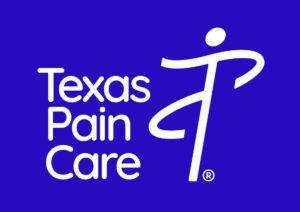
Not only is it hard enough to deal with being dealt a cancer diagnosis, there are a host of additional concerns and issues that can arise. Your thoughts race from treatment to family to prognosis and timeline.
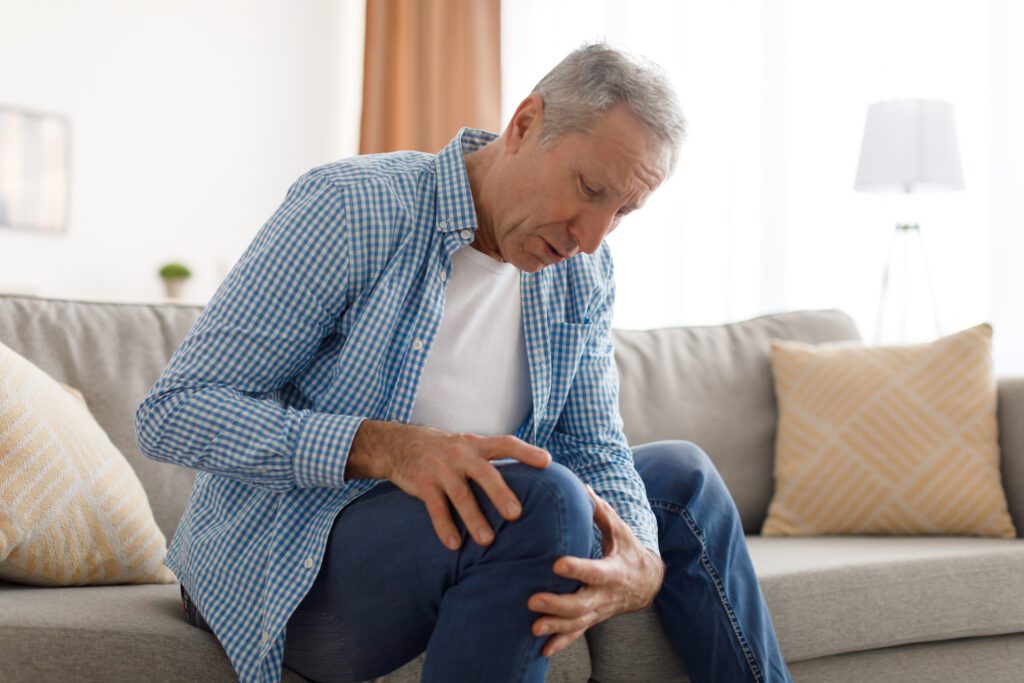
What’s something that you do every day without even thinking? Walking! It’s safe to say that you spend the majority of your day upright, which includes walking to your car, walking around your home, exercising, extending your legs while driving, and so on. Knee pain can halt your day-to-day activities, regardless of how minor or major the pain is. So if you’re experiencing knee pain that is making it difficult for you to enjoy everyday tasks, it’s time to look at the best treatment options with a Knee Pain Specialist in Houston to help get you out of pain.
Knee pain is a complaint that knows no age or health limitations. Regardless if you’re healthy, active, young or old, there is a great chance that at some point you’ll experience some version of knee pain. Pain in the knee could be a result of an injury, such as a ruptured ligament or torn cartilage, or certain medical conditions including arthritis, gout and infections. Often, at-home self care measures can resolve minor knee pain issues, but then there are instances when surgical treatment might be necessary.
Knee pain is most often associated with everyday use, including basic activities like walking, standing, bending and lifting. Athletes are at a higher risk of experiencing knee issues if their sport includes jumping, quick pivoting or running. Regardless of how the knee pain happened, it could leave you standing still. This is why the Texas Pain and Wellness experts in Houston, Sugarland and Missouri City areas are trained in the best ways to determine the underlying cause of pain and the best way to remedy that pain, so you can comfortably get back on your feet.
The knee is one of the largest, most complex and most vulnerable joints in the body. It bears a great deal of stress from everyday activities like walking and kneeling, to high-impact activities like jogging, power lifting and aerobics. The knee is formed by four bones: the fibula (the thinner bone in the lower leg), the tibia (the larger bone or shin bone in the lower leg), the femur (the thigh bone or upper leg bone) and the patella (knee cap).
There are two groups of muscles that work together with the knee, which give the knee motion. The quadricep muscles, located on the front of the thigh, help to straighten the knee, and the hamstring muscles, located on the back of the thigh, help the leg to bend at the knee.
The knee is essentially two long leg bones that are held together by an intricate combination of muscles, ligaments and tendons. Each bone end is covered with a layer of cartilage, the medial and lateral, that act to absorb shock, ease movement and protect the knee. The anterior cruciate ligament (ACL) prevents the femur from moving backward onto the tibia, and the posterior cruciate ligament (PCL) prevents the femur from sliding forward. There is also the articular cartilage that sits behind the patella, providing a smooth and lubricated surface for the knee joint, and the bursae, which are fluid-filled sacs that help to cushion the knee joint.
You can also send us a message
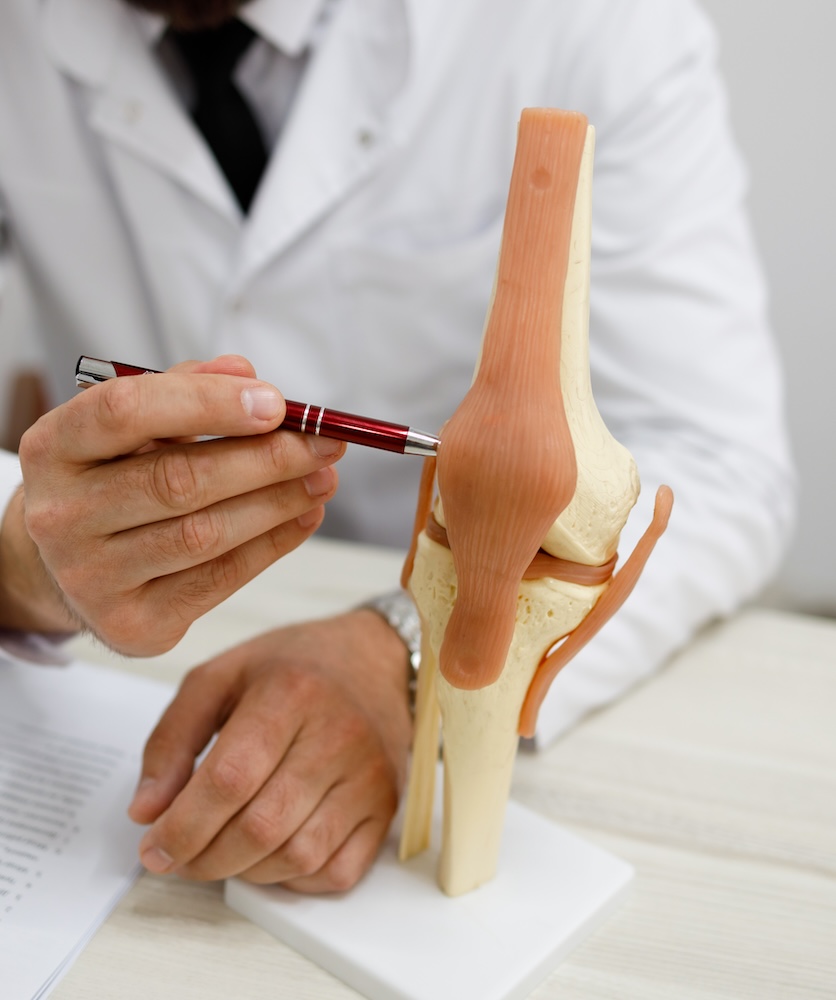
The most common causes of knee pain are related to aging, injury or repeated stress on the knee. As you can imagine, the knee is a very overworked joint! While its main purposes are to bend (flexion) and straighten (extension), it is also capable of twisting. But when the twisting is taken too far, injuries occur to the ligaments connected to the knee.
Arthritis
Arthritis is one of the major age-related knee problem causes, while other causes could be due to injury or a sudden movement that strained the knee, or even other health issues including an autoimmune disease. The most common knee pain causes include:
Osteoarthritis
This is the most common type of arthritis that affects the knee, and any joint in the body. Osteoarthritis is a degenerative process where the cartilage in the joint gradually wears away with use, so most often affects middle-age and older people. Osteoarthritis may be caused by excess stress on the joint such as repeated injury or being overweight.
Torn ACL
If you’ve played sports in your adolescence or adult years, or watched professional sporting games, you know all too well about the prevalence of torn ACLs. One of the most common sources of knee pain, a torn ACL usually happens with sudden changes in direction, so often happens to soccer and tennis players.
The ACL prevents the shinbone from moving too far past the knee and provides the majority of the knee’s stability. Of those people who suffer from ACL tears, most of them occur while playing sports, during motions that include quick stops and acceleration, twisting and jumping. Reconstructive surgery is most often needed for a complete repair, and it’s likely that there are other injuries associated with an ACL tear, including issues with the meniscus, ligaments and cartilage in the knee.
Torn Meniscus
The meniscus, of which there are two and both help to stabilize the knee, act as shock absorbers to cushion the impact between the bones in the knee during movement. Unfortunately, there are six main tears that can happen to the meniscus that can lead to knee pain. Location of the tear is key to determining the best course of treatment. If the tear is outside of the meniscus where there is a large amount of blood, tears can most often heal on their own. However, there are other times when surgery is needed.
Radial Tear: The most common meniscus tear, this type of tear occurs in the area of the knee that isn’t supplied with blood, so it cannot heal on its own.
Horizontal Tear: These tears develop along the backside of the horseshoe-shaped structure and are often the easiest to repair.
Incomplete Tear: Considered stable injuries that don’t require surgery, incomplete tears are a sign that the meniscus tissue is in the early stages of degenerative changes.
Complex Tear: This type of tear involves several tear patterns, often involving patterns that are signs of both radial and horizontal tears.
Flap Tear: A flap tear affects just a small piece inside the curve, creating an unusual tear pattern. Patients might experience a catching sensation in the knee, which is due to the flap of the meniscus. Surgery can remove the flap, resolving the pain.
Bucket Handle Tear: Located inside the curve, this type of tear is similar to a horizontal tear but on a larger scale. The tear causes the knee to become stuck, blocking the normal motion of the knee. Immediate surgery is required to restore the knee’s standard range of motion.
Knee Bursitis
Bursitis of the knee is inflammation of the bursa, or a small, fluid-filled sac, that is located near the knee and joint. The bursae help with knee movement because they reduce friction and cushion pressure points between the bones and tenson, muscles and skin near the knee joint. There are approximately 15 bursae around the knee, and while any of them can become inflamed, knee bursitis usually occurs over the kneecap or on the inner side of your knee below the joint. As you can imagine, bursitis causes pain and can limit knee mobility, but the good news is that treatment can include at-home remedies and doctor-led therapies, with a goal to alleviate pain and treat the inflammation.
Tendinitis/Tendinosis
Tendonitis is a condition where the connective tissues between your muscles and bones (tendons) inflame, which generally happens with overuse. Certain activities like running, jumping, cycling or basketball can cause strain on the tendons, which is often called “runner’s knee” or “jumper’s knee.” If you have tendonitis, you’ll feel pain and soreness around your affected joint, usually near where the tendon attaches to the bone.
Although very similar, the two conditions affect the tendon in different ways, both of which cause knee pain. While tendinitis is an inflammatory condition resulting from trauma, tendinosis results from weakened collagen, which is a medical condition.
Dislocated Kneecap
The greatest chance of experiencing a dislocated kneecap is from a sports injury when the patella (kneecap) slides out of place. This type of discomfort is usually simply remedied by popping the patella back into place, but if that is unsuccessful, other treatments may be necessary.
Patellofemoral Pain Syndrome (PFPS)
Patellofemoral Pain Syndrome is a broad term used to describe pain in the front of the knee and around the patella, or kneecap, wherein the cartilage under the kneecap is damaged due to injury or overuse. It can also be caused from improper kneecap alignment or excess weight.
This is one of the most common knee pain seen and treated by doctors, and is common in people who participate in sports, especially women and young adults. The most often reported symptom is knee pain that increases with climbing stairs or squatting weights. With this condition, the cartilage under the kneecap may wear down, soften or become rougher, causing pain. While the primary treatment is rest, pain relievers and physical therapy can also help to reduce pain.
Gout
While gout most often occurs in the big toe, it can also affect the knee. Gout is caused by the buildup of uric acid in the blood, which usually happens in and around the joints, especially those in the knee. Most people with knee gout experience the most intense pain during the first 24 hours of a gout flare, with additional complaints of swelling, redness and warmth. Pain often develops in the night and could hurt continuously for up to two weeks before the flare subsides.
Loose Tissue or Bone
If your knee has experienced a history of traumatic injury, whether from sports or accidents or both, or you’ve experienced an active lifestyle that puts pressure on the knee, there is a chance that small bits of tissue or bone have flaked off and found their way into the knee joint. This can also happen with bone degeneration. These bodies float around within the knee joint, causing pain and swelling, or producing a feeling of catching or locking within the knee.
IT (iliotibial) Band Syndrome
The IT Band, or iliotibial band is found along the outer thigh and works to stabilize the knee and hip. This syndrome occurs when the fibers that make up the band overdevelop, which causes them to rub against the knee or hip bone. This rubbing causes friction, and this friction causes knee pain, usually while bending the leg at a 45-degree angle.
Another knee injury that is caused by overuse, IT band syndrome happens most frequently to runners, cyclists and athletes who use their knees for repetitive flexing and extending, possibly powerlifters.
Rheumatoid Arthritis
This particular type of arthritis is a chronic, inflammatory disorder that causes incredible pain in the knees and other joints. Since it is an autoimmune disease, treatment options range from lifestyle changes, physical therapy, occupational therapy, nutritional therapy, medication and surgery.
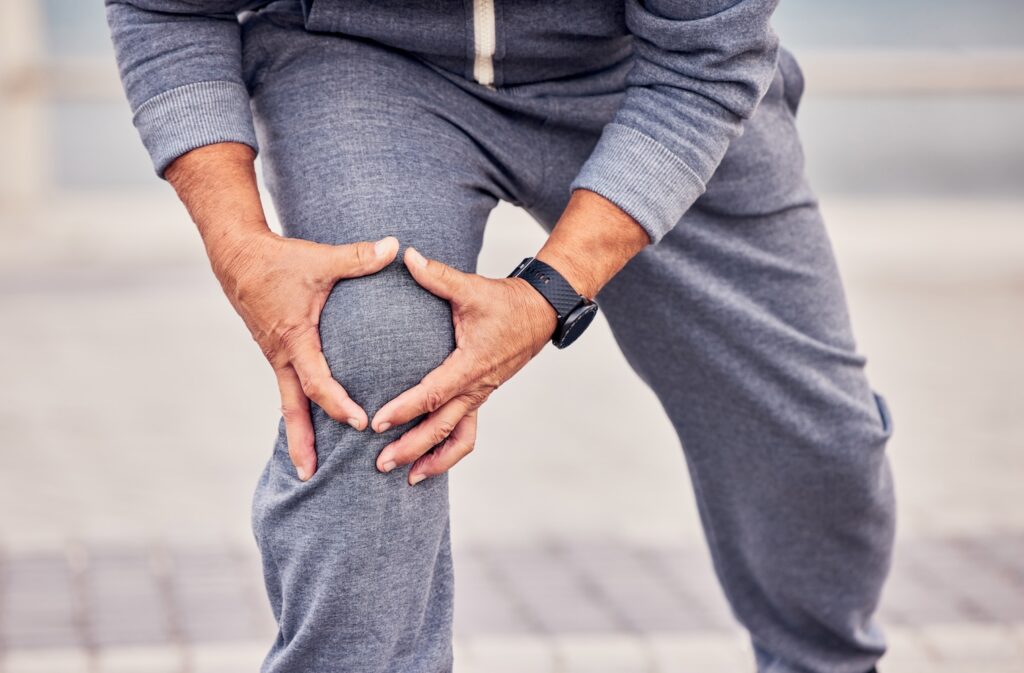
Regardless if you’ve experienced knee pain in the past, have a history of knee pain, or just feel like something “isn’t right,” it’s important to recognize that knee pain needs to be treated. If your knee pain has just started and you don’t feel that it’s serious, you can try resting it, applying ice, elevating the leg, sleeping with a pillow in between your legs, or taking over-the-counter medication (as prescribed).
If, however, you experience any of the following symptoms with your knee pain, it’s time to call your medical professional:
The Texas Pain Care team in Sugarland, Missouri City and Houston areas are pain management experts and are here to not only get you out of pain, but to also ensure that there aren’t any additional complications after enduring knee pain. Don’t live with knee pain, treat it.
The best way to treat knee pain is to get a proper and thorough diagnosis. Since the anatomy of the knee is so complicated, and the knee is so crucial for everyday life, it’s important to treat knee pain seriously. The first step is placing your trust in a team of Texas knee pain specialists who have the training and know-how to treat not just the knee, but the person.
Your provider will begin by taking an MRI, which looks at the soft tissue of the knee, and X-rays, which helps to get a picture of the health of the bones. A CT scan might also be necessary, as well as taking a joint fluid culture, which is when fluid is taken from the knee and examined under a microscope. After learning about your medical history and performing a comprehensive physical examination, he/she will be able to determine the cause of your knee pain and recommend the best course of treatment. The goal is to reduce your pain and inflammation, and achieve an optimum quality of life, today and in the future.
As causes of knee pain vary, so do treatment options. The ideal solution for knee pain is always RICE (rest, ice, compression and elevation), but this is not always the case. Sometimes knee pain is so severe that it requires surgical options, whether that be injections or surgery.
Lifestyle Changes
For knee pain that doesn’t appear to be serious, or doesn’t last an extended amount of time, making lifestyle changes could help relieve pain and help to prevent future knee pain. Applying ice can help acute knee pain if applied in the early stages of pain. There are also knee pain exercises that can help to alleviate knee pain, in addition to starting a low-impact exercise regimen, including swimming or walking. Starting a physical therapy treatment can also help to strengthen the muscles around the knee, which helps to provide greater stability and protects the knee against injury. Knee braces and better walking/running shoes can also go a long way, as well as taking supplements that help to increase fluid movement in your joints.
Steroid Injection
A hydrocortisone injection is a popular method for remedying knee pain as it’s a quick, simple and safe way to enjoy relief. While it is a temporary fix, it does fix the pain felt from inflammation, swelling, arthritis and injuries, as well as increase mobility in the knee and subsequently the leg as well. These injections, which are placed directly into the knee point, can provide results from anywhere between a few weeks to a few months. They do not address or fix the underlying cause of the pain, so if pain does persist or increase, it might be time to address other options.
Gel Injection
Another non-surgical treatment method, gel injections are a great option for relieving knee pain. This treatment option involves injecting a gel-like fluid called hyaluronic acid directly into the knee joint. The gel acts as a lubricant that enables the bones of the knee to move smoothly over each other, as well as acting like a shock absorber for loads placed on the joint itself.
Genicular Nerve Block
Genicular, or “relating to the knee,” is a popular temporary option for alleviating chronic knee pain or pain associated with knee surgery. This option consists of an injection of medication close to certain nerves in the knee to provide temporary pain relief. It is also recommended treatment for patients who have severe osteoarthritis who cannot have knee surgery, or for patients who cannot have surgery due to health reasons.
Radiofrequency Ablation (RFA)
For those who suffer from chronic knee pain but who don’t want to, or can’t, utilize surgery as an option, radiofrequency ablation (RFA) is a great option. RFA uses radio waves to create a heat lesion around the genicular nerves, which are nerves that are responsible for carrying pain signals from the knee to the brain. Once the correct nerve is targeted, heat is applied to create a lesion that blocks pain signals. Patients who undergo RFA can find knee pain relief lasting anywhere from three months up to a year.
Platelet-Rich Plasma (PRP)
A popular treatment option for managing pain relating to mild or moderate forms of osteoarthritis, the idea behind PRP is that the body will help to heal itself. Platelets already present in the blood contain growth factors. The theory is that by injecting PRP growth factors from your own blood directly into an injured area of the body will help the tissues repair themselves by causing new cells to form, possibly helping to even reverse existing tissue damage. Patients can expect to enjoy a reduction of pain and stiffness, as well as an increase in knee function.
Professional Knee Pain Solutions
Knee pain shouldn’t have to be something you live through or deal with. Regardless if it happens occasionally, isn’t “that bad” or is completely debilitating, it’s worth having a team of medical professionals take a look. This is exactly what the Texas Pain Care team is here to do.
Our team of dedicated professionals will always exhaust at-home and minimally-invasive, non-operative remedies first, with the hopes of getting you out of pain as quickly and as comfortably as possible. Should surgical options be needed and recommended, you can enjoy knowing that our team utilizes only the most state-of-the-art and technologically advanced treatment options that will resolve knee pain regardless of the type and severity.

Not only is it hard enough to deal with being dealt a cancer diagnosis, there are a host of additional concerns and issues that can arise. Your thoughts race from treatment to family to prognosis and timeline.

The medical necessity to have a limb or part of the body amputated is a big decision and subsequent lifestyle change. Whether due to trauma or a medical condition, a person who loses a part of their body will have to manage a new, different way of living.
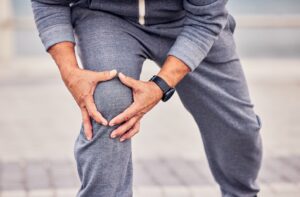
Feeling achy or stiff after a hard workout, a long flight, or sleeping on a too soft or too hard mattress? That is common. What is even more common is experiencing these pains in general. This is referred to as arthritis, and the majority of adults can expect to experience arthritis and its symptoms on some level during their lifetime.
Get out of pain
Get back to living
Treatments
Conditions
